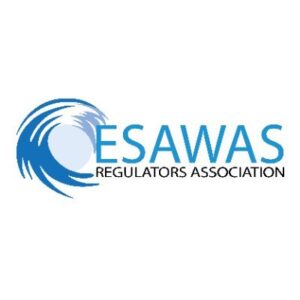
By Esther David
The Essence of the Report
ESAWAS (Eastern and Southern Africa Water and Sanitation Regulators Association), a regulatory association that regulates water supply and Sanitation across African countries, has published a report that gave an overview of the status of WSS regulation in Africa. The 2022 report summarised regulatory frameworks for WSS service provision in urban and rural areas in 54 countries.

Scope of the Report
The countries included in the report are Algeria, Egypt, Libya, Mauritania, Morocco and Tunisia, Benin, Burkina Faso, Cabo Verde, Cote d’Ivoire, Gambia, Ghana, Guinea, Guinea-Bissau, Liberia, Mali, Niger, Nigeria, Senegal, Sierra Leone and Togo Burundi, Cameroon, Central African Republic, Chad, Congo Republic, Democratic Republic of the Congo, Equatorial Guinea, Gabon, Sao Tome and Principe, Comoros, Djibouti, Eritrea, Ethiopia, Kenya, Madagascar, Mauritius, Rwanda, Seychelles, Somalia, South Sudan, Sudan, Tanzania and Uganda, Angola, Botswana, Eswatini, Lesotho, Malawi, Mozambique, Namibia, South Africa, Zambia and Zimbabwe.
The report revealed that countries with significant reforms and expansive sets of regulatory mechanisms are Cape Verde and Tanzania; countries like Equatorial Guinea and Eritrea have a very limited set of regulatory models, while in other countries, measures are put in place to strengthen WSS regulation.
Regulatory Models
The report explained the different types of regulatory models succinctly:
- Regulation by an Agency is a body :(semi-) autonomous from the Government having the powers to regulate WSS or aspects of WSS.
- Regulation by Contract: A public entity other than a (semi-) autonomous regulatory agency and service provider agrees on contractual clauses that determine how key aspects of WSS service provision are defined and controlled, such as tariffs and service standards.
- Ministerial Regulation: A ministry performs some or all regulatory responsibilities for WSS and does not use contracts as a core regulatory tool for WSS service provision.
- Self-Regulation: A service provider (typically a public utility or local government unit) is legally mandated to perform key regulatory activities upon itself (. e., setting tariffs and performed standards, performance reporting).
The report gives detailed information on the various regulatory models, which are concerned with the duty of monitoring water supply and sanitation in the society
Findings from the Report
The report’s findings show that WSS service rates have changed over the last two decades across Africa and each region.
- Comparing it shows that progress in the water supply is evident across Northern, Western, Eastern and Southern Africa, with average coverage rates increasing by 14-15%for water supply and 11-17% for sanitation.
- It furthers that the improvements have been slower in water supply and sanitation and seven per cent for sanitation.
- In Central Africa, it is six per cent for water supply and seven per cent for sanitation
Furthermore, the report states that significant regional variations exist in the regulatory models utilized for WSS service provision. It states the percentage of countries in Africa and across each region where these four regulatory models are predominant.
- Regulation by agency 37% of countries
- Ministerial regulation 33% of countries, and
- Regulation by contract 28%
It also stated that Western Africa had made the greatest progress in establishing dedicated regulatory agencies and bodies, with 53% of countries applying regulation by the agency. In Central Africa, the prominence of regulation by contract in 44% of countries and ministerial regulation in 22% of countries results in ministries rather than dedicated regulatory agencies holding the broadest mandates and functions.
The report also states that in Southern and Eastern Africa, several countries have established dedicated regulatory agencies and bodies; however, ministerial regulation remains the most common predominant regulatory model.
- In Northern Africa, regulation by contract is the most common predominant regulatory model 50% of countries.
- In Central Africa, the prominence of regulation by contract In 44% of countries and ministerial regulation in 22% of countries results in ministries rather than dedicated regulatory agencies holding the broadest mandates and functions.
- In Southern and Eastern Africa, several countries have established dedicated regulatory agencies and bodies; however, ministerial regulation remains the most common predominant regulatory model.
- In Northern Africa, regulation by contract is the most common predominant regulatory model in 50% of countries, the report states.
Leave a Reply